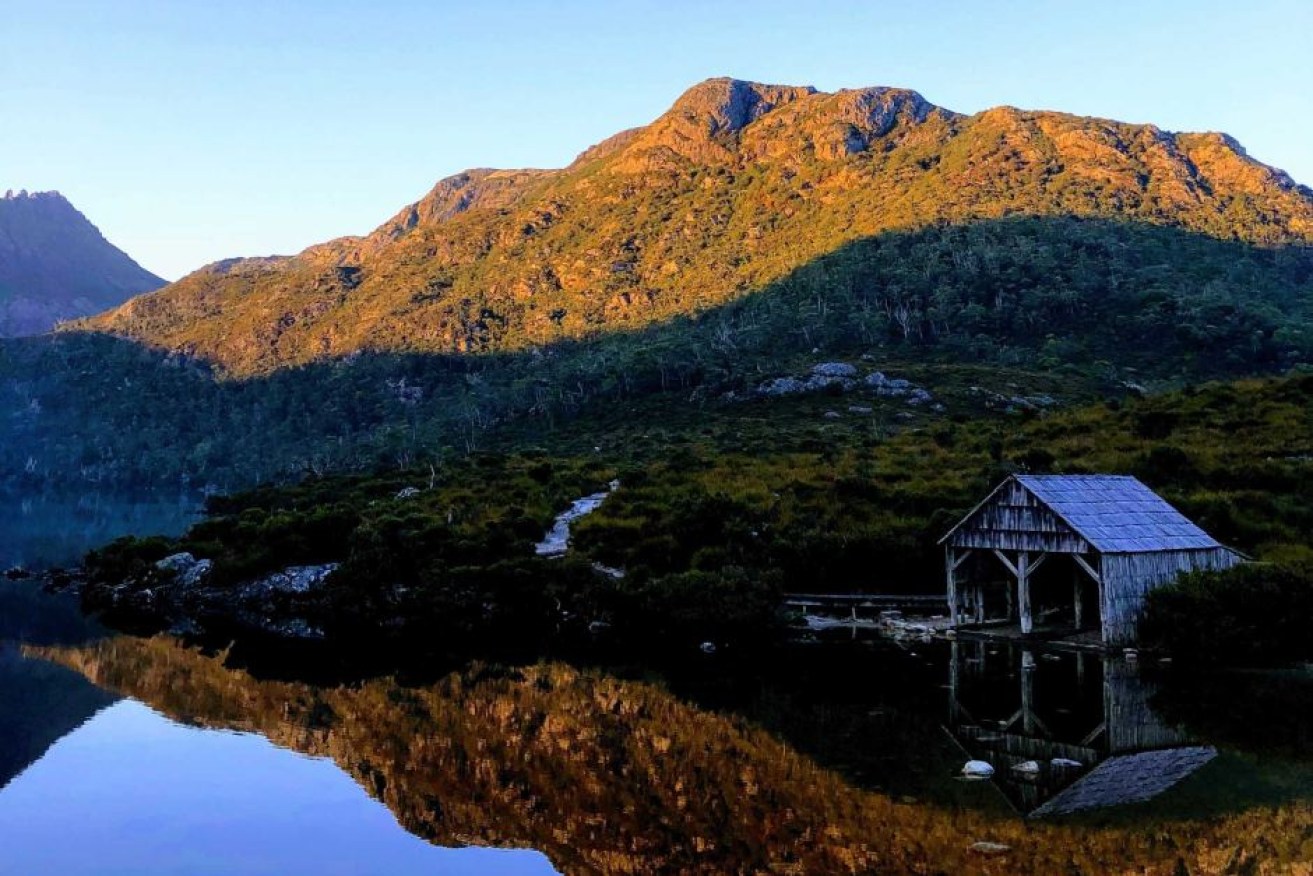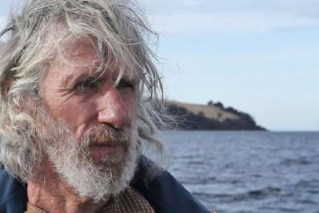Tasmanian World Heritage lakes have ‘disturbing’ contamination levels, study shows

Dove Lake is one of the lakes discovered to contain heavy metals. Photo: ABC News
Tasmania trades on its reputation for unspoiled and beautiful natural landscapes.
But many of those landscapes may not be as pristine as they appear.
A recent study has shown some lakes in the protected Wilderness World Heritage Area have heavy metal contamination levels among the highest ever recorded.
“I find these findings to be quite disturbing and something that I really think the people of Tasmania need to know about,” said Simon Haberle, an environmental scientist from the Australian National University (ANU) who helped carry out the research.
The study shows the sediment at the bottom of the lakes is contaminated with heavy metals including arsenic, lead, cadmium and copper.
The scientists are not yet sure what effect it is having on the animals and people who use the area, but they are confident they know what has caused it: Historical mining that took place on the west coast of the state.
“We’ve been able to model the distribution of the metals and the model tells us that the heavy metals come from mining ” Professor Haberle said.
‘The people of Tasmania need to know’

Rainbow over Dove Lake with Hanson’s Peak in the distance. Photo: Mitchell Woolnough
It has been previously established that mining activity has contaminated rivers in Tasmania but this new research shows lakes up to 130 kilometres away from the mines have also been affected.
The study shows the heavy metal was transferred through the atmosphere to the isolated lakes and is embedded in the sediment.
A range of lakes on the west coast of Tasmania were strategically chosen to map the scale and severity of the contamination.
“These small lakes act as almost like rain gauges; they collect the rainfall water from the atmosphere,” Professor Haberle said.
“Anything that’s like dust, that’s falling from the atmosphere like heavy metals, will be accumulated in these small lakes.”
The study found the contamination was worse in areas closer to historical mining centres but was spread over an area much larger than originally anticipated.
Historical mining

Mount Lyell copper mine in the early 1900s. Photo: ABC News
Early mining in Tasmania was a dirty business.
The discovery of gold and copper in the area near Queenstown on the west coast of the state in the mid- to late-1800s had a devastating impact on the local environment.
The trees from the surrounding mountains were initially cut down to use as fuel for the smelters, and the fumes from those same smelters then poisoned much of the vegetation.
With little vegetation left, there was nothing to protect the top soil when the rain set in. It washed it away, leaving the barren moonscape that makes the town so distinct.
Those same mining practices are being blamed for the contamination of lakes more than 100 kilometres away.
The Minerals Council in Tasmania was not available for interview but in a statement to 7.30 said it was conducting its own inquiries.
“Industry members have commissioned a suitably qualified independent expert to conduct a review of the study and the data contained therein,” the statement said.
“Once completed and duly reviewed, industry members will determine what further study they consider should be undertaken.”
Mining has come a long way since the 1800s and current practices are very different, but some experts are still concerned about the level of pollution created.
The run-off from mining today is often captured in a tailings dam which, to the untrained eye, might appear to be just a large body of water but is actually full of chemicals.
“Tailing dams deal with effluent of mining activity,” Professor Haberle told 7.30.
“Generally that works, but we know of many examples where tailings dams have burst, and that releases heavy metals back into the system.”
‘These metals don’t go away’

Angler Brett Smith fishing at Dove Lake. Photo: Mitchell Woolnough
Dove Lake is the most iconic of those lakes that tested positive to heavy metal contamination.
It sits below the picturesque Cradle Mountain, which draws hundreds of thousands of visitors each year.
The lake is teeming with trout, but it is not a popular fishing spot because the fish are so plentiful that they are relatively small.
But Tasmanian angler Brett Smith says people still like to cast a line there.
“I think every fly fisherman in Tasmania dreams about casting a line under Cradle Mountain,” he said.
“It’s probably the best view in Tasmania.”
The view might be spectacular, but public health academic Melissa Haswell-Elkins, from the University of Queensland, said the results from the study should be a worry for anglers like Mr Smith.
“The bigger concern in this case here are people who consume fish or aquatic life from the lake where there is high amounts of cadmium, because it can transfer through the food chain and concentrate into the organisms that people might consume,” she said.

Dove Lake and Cradle Mountain at dusk. Photo: ABC News
Dr Haswell-Elkins said of the heavy metals discovered she was most worried about cadmium and lead because of the impact they could have on animals and humans.
And she said this was not a problem that would solve itself.
“These metals don’t go away – they can get turned up, and they can get taken up into the aquatic plants and come up through the food chain,” she said.
TasWater confident water safe to drink

TasWater’s Lance Stapleton says Tasmanians can be confident about their drinking water. Photo: Mitchell Woolnough
TasWater said it had looked at the study and was confident the problems identified did not pose a risk to the drinking supply.
“Our data sets show that there aren’t any heavy metals coming through in the raw water or drinking water so people can rest assured it’s safe to drink,” TasWater’s Lance Stapleton said.
“People can be confident the water is OK.”
He said while the heavy metals remained isolated at the base of the lakes, there was little concern for the public.
“They found contamination in the sediment, and the transfer into the water is a different thing,” he said.
But researchers are worried about what could disturb that sediment and unsettle the heavy metal contamination.
The danger of natural disasters

A helicopter water bombs fires south of Hobart in January. Photo: Nick Monk
Tasmania has just experienced one of its worst fire seasons on record.
Hundreds of thousands of acres were burnt in fires that raged for months and which scientists linked to climate change.
The fires cleared large swathes of vegetation, which could lead to erosion once heavy rain hits.
And erosion could disturb these metals and force them into contact with more animals and people.
“Those fires would have burnt across the peatlands. A disturbance event like a fire could release these heavy metals back into the environment,” Professor Haberle said.
Dr Haswell-Elkins said she shared those concerns and it was not just fires we should be worried about.
“There’s always movement in our environment and changes,” she said.
“And when we see more floods, more severe floods, washing what previously would have been safely protected, but now washing into our waterways and coming right down through, we’re bound to see more and more circumstances where the aquatic life is affected.
“Alternatively, if we have a lot of drought and these heavy metals could become more concentrated, we could have the opposite happening.
“So, yeah, it’s absolutely the best thing to do to keep our environment as clean as possible.
“But this example, I think, is showing us that we don’t understand everything about the impacts of pollution.
“In light of climate change causing more severe temperatures, we’re seeing atmosphere temperatures changing and that affects the way these chemicals move in the environment as well.”







